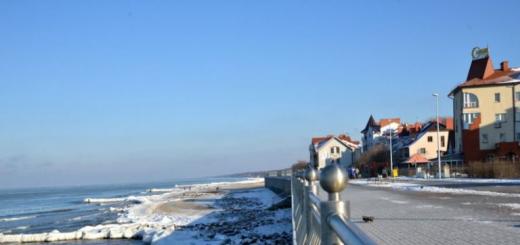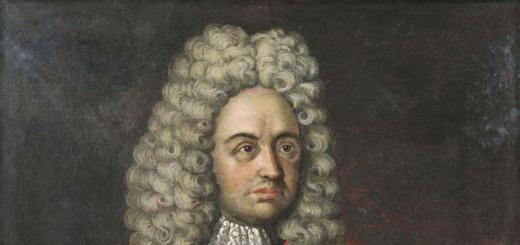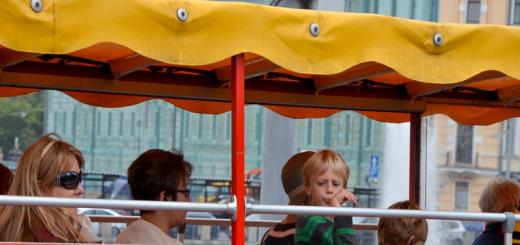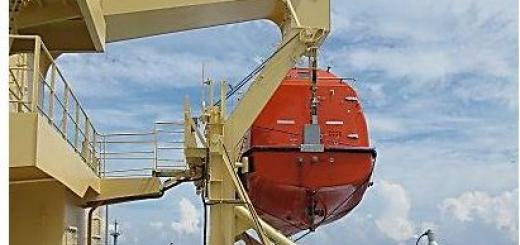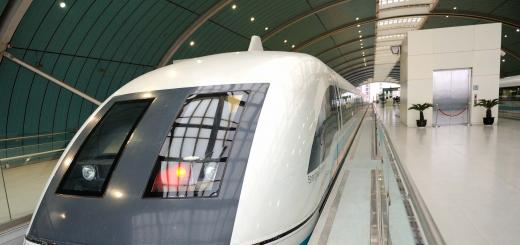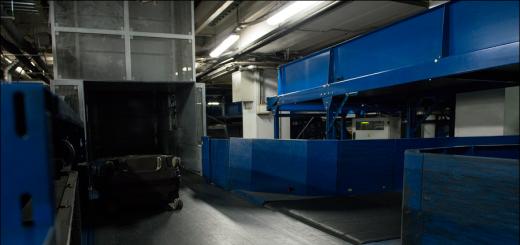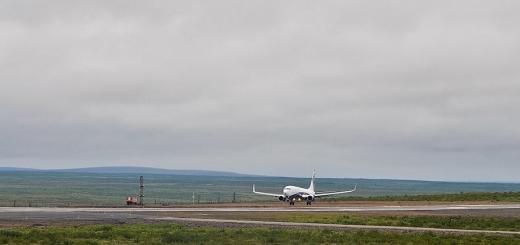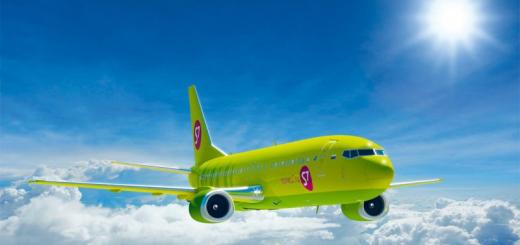Russia is a huge unexplored country. Sometimes the sights of exotic resorts or famous monuments of European architecture are known to us much better. But our country is rich in no less impressive views.
1. Lena Pillars, Yakutia
The Lena Pillars are rocks located on the right bank of the Lena River, two hundred kilometers from Yakutsk. Each pillar is a sculptural structure, reminiscent of medieval columns. These rocks are 500,000 years old.
2. Lake Elton, Volgograd region
Lake Elton is the largest salt lake in Russia. The mineralization of water in summer can reach 400 g/l, which is 1.5 times higher than in the Dead Sea. Only bacteria and unicellular algae live in such a solution. 
3. Valley of Geysers, Kamchatka
The only geyser field in Russia and Eurasia, one of the largest such places in the world. On its surface there are about 20 large geysers and many hot springs that emit water or steam.

4. Altai mountains
Altai is an unforgettable country of majestic mountains. Since ancient times, it has been considered holy and very attractive for spiritual pilgrimages.

5. Chara Sands, Trans-Baikal Territory
The Chara Sands is a desert, which is located four dozen kilometers from the Kodar glaciers among snow-capped mountains, dense taiga and vast swamps. The massif is elongated from the southwest to the northeast in the direction of the prevailing winds and covers an area of about 50 km².

6. Elbrus, Kabardino-Balkaria
The highest point in Russia. The two peaks crowning the cone-shaped volcano are separated by a saddle, the height of which is 5300 meters. The mountain, formed about a million years ago, consists of alternating layers of lava, ash and tuff.

7. Orda Cave, Perm Territory
Orda Cave is the longest underwater gypsum cave in Russia. If there is a paradise for divers, it is here. The water here is extremely clean, transparent and very cold (+ 4 degrees).

8. Pillars of weathering, Komi Republic
Weathering pillars, which are located on the Man-Pupu-Ner plateau, can be safely called the hallmark of the Urals. Only the most desperate come here - the distance to crowded places is 400 kilometers.

9. Curonian Spit, Kaliningrad Region
The Curonian Spit is a national park and a sandy peninsula separating the freshwater Curonian Lagoon from the Baltic Sea. 
10. Putorana Plateau, Krasnoyarsk Territory
Journalists compare the Putorana Plateau with the "lost world" of Conan Doyle, and tourists call it "the land of ten thousand lakes and a thousand waterfalls." Together they make up the largest reservoir of fresh water in Siberia after Lake Baikal.

11. Kungurskaya cave, Perm region
The Kungur cave is the seventh longest of all the world's gypsum caves. According to scientists, the age of the cave is about 10-12 thousand years. Many grottoes and passages have not yet been fully explored.

12. Avacha Bay, Kamchatka Territory
Avacha Bay is the second largest bay in the world. It is able to accommodate the entire world fleet. The length of the bay is 24 kilometers, and the depth can reach 26 meters. 
13. Tyatya Volcano, Kuril Islands
After the 1973 eruption, people no longer live here. The eruption was so strong that volcanic ash reached the coast of Shikotan Island, located 80 kilometers away.

14. Lake Kezenoy-am, Republic of Chechnya
Lake Kezenoy-Am (Eisen) is the largest and the only lake in the mountains, located at an altitude of 1870 meters above sea level. Its length from north to south is 2 kilometers, and from west to east - 2.7 kilometers.

15. Pole of Cold, Yakutia
Oymyakon is the famous Pole of Cold. It is considered the coldest point in the Northern Hemisphere and the coldest inhabited area on Earth.

16. Jack London Lake, Magadan Region
The lake with a marvelous name is located at an altitude of 803 meters and is surrounded by beautiful mountains. The narrow bay with rocky shores is reminiscent of the fjords of Norway and the lakes of Scotland. In the taiga, in the mountains around the reservoir, wolverines, bears, and elks are found.
This week, the results of the Russia 10 competition were summed up, the purpose of which is to select the main attractions of the country. The new visual symbols of Russia, chosen by popular vote (almost 225 million votes were taken into account in total), according to the organizers of the competition, are designed to promote the image of Russia as a unique country with a rich cultural and natural heritage.
We present you 10 winners of the competition, selected from over 700 objects.
(Total 10 photos)
1. Lake Baikal (Photo: Gennady Losev)
Baikal is the largest reservoir of high-quality fresh water, the deepest and one of the oldest lakes on Earth. In 2008, Baikal was recognized as one of the Seven Wonders of Russia.

2. Rostov Kremlin (Photo: Valery Abramov)
The Kremlin was built in the 17th century as the Rostov Metropolis, that is, the residence for Metropolitan Jonah. Therefore, there is nothing formally to call it the Kremlin, the stone walls were quite decorative and should not have served to defend the city. The Kremlin has eleven towers in total. Inside there are several cathedrals, among which the Assumption Cathedral with its four-domed bell tower stands out. The Kremlin also became famous for the fact that it was here that episodes of Gaidai's film "Ivan Vasilyevich Changes His Profession" were filmed.

3. Peterhof (Photo: Ilya Shtrom)
Peterhof is a kind of triumphant monument to the successful completion of Russia's struggle for access to the Baltic Sea. The monument of world architecture and palace and park art includes a palace and park ensemble of the 18th-19th centuries, as well as the world's largest system of fountains and water cascades. The Peterhof Museum-Reserve unites 21 museums, including such unexpected ones as the Imperial Bicycles Museum, the Playing Card Museum and the Collectors Museum.

4. Nizhny Novgorod Kremlin (Photo: Alexander Sinderev)
From the annals it is known that Nizhny Novgorod was founded in 1221 by the Grand Duke of Vladimir Yuri Vsevolodovich. The defensive fortifications of the city - deep ditches and high ramparts - were originally built of wood and earth. The Nizhny Novgorod Kremlin became stone in 1515, when it became necessary to strengthen the defense of the city - the main stronghold of the Moscow State against the Kazan Khanate. The new Kremlin was surrounded by a two-kilometer wall with 13 towers. In the 16th century, the fortress was repeatedly besieged by the enemy, but the enemy was never able to capture it.

5. Mamaev Kurgan and the sculpture "The Motherland Calls" (Photo: Anastasia Andreeva)
The memorial to the Heroes of the Battle of Stalingrad was opened on Mamaev Kurgan in Volgograd in 1967. From the Square of Sorrow, the ascent to the top of the mound begins to the base of the main monument - "The Motherland Calls". Along the serpentine, in the hill, the remains of the soldiers - the defenders of Stalingrad were reburied. The statue by sculptor Vuchetich and engineer Nikitin is made of 5,500 tons of concrete and 2,400 tons of metal structures. The height of the monument is 86 meters, the height of the sculpture itself is 53 meters. At the same time, the thickness of the walls of the sculpture is no more than 30 centimeters. The sword in the hand of the Motherland weighs 14 tons and has a length of 33 meters. It is said that a car fits freely in the palm of the statue. In 2008, the statue of the Motherland on Mamaev Kurgan was also recognized as one of the Seven Wonders of Russia.

6. Pskov Kremlin - Krom (Photo: Valery Abramov)
Pskov Krom is the largest fortress in Europe. The length of its walls is 9 kilometers, the area is 3 hectares. Krom is located on a narrow cape at the confluence of the Pskov River with the Velikaya River. Now the territory of the Kremlin unites two different parts of the city: Detinets with the Trinity Cathedral, the bell tower, Veche Square and Dovmontov city. The pride of Russian art of the 17th century is the seven-tiered iconostasis of the Trinity Cathedral. The most revered shrines of the temple include miraculous icons, an ark with the relics of Pskov saints and Holguin's cross. For many centuries, the threat of an enemy attack constantly hung over the city, which forced the people of Pskov to constantly improve defensive structures. The Pskov Kremlin has withstood 26 sieges in its history. The fortress, which was in active military use for almost 1000 years, has come down to us in almost its original form.

7. Mosque named after Akhmat Kadyrov "Heart of Chechnya" (Photo: Timur Agirov)
Mosque "Heart of Chechnya" in Grozny is considered one of the largest, most beautiful and majestic mosques in Europe and the world. It was opened on October 17, 2008 and named after Akhmat-Khadzhi Kadyrov, the first president of the Chechen Republic. The mosque is located on the picturesque bank of the Sunzha River, in the middle of a huge park with a cascade of colored fountains and night lighting. The outer and inner walls of the mosque are finished with marble, and the 36 chandeliers installed in the mosque resemble the three main shrines of Islam with their shapes: 27 chandeliers imitate the Kubbatu-as-Sakhra mosque in Jerusalem, 8 are modeled after the Rovzatu-Nebevi mosque in Medina and the largest, eight-meter chandelier, repeats the shape of the shrine of the Kaaba in Mecca. The creation of a collection of exclusive chandeliers took several tons of bronze, about three kilograms of gold, and more than one million details and Swarovski crystals.

8. Trinity-Sergius Lavra (Photo: Vera Ostroumova)
The Trinity-Sergius Lavra is located in the center of the city of Sergiev Posad, Moscow Region, on the Konchura River. Founded in 1337 by St. Sergius of Radonezh. The earliest building of the monastery is considered to be the white-stone Trinity Cathedral, erected in 1422 on the site of a wooden temple and perpetuating the traditions of Moscow architecture of the 14th-15th centuries. This is a unique historical object, one of the few cathedrals where the iconostasis has been preserved, painted by the greatest icon painters - Andrei Rublev and Daniil Cherny. The relics of Sergius of Radonezh lie in the Trinity Cathedral, hundreds of parishioners come to bow to them every day. In 1744, the Trinity-Sergius Monastery was awarded the honorary title of Lavra. Today it is a functioning male monastery, the spiritual center of Orthodox Russia. Since 1940, the Trinity-Sergius Lavra has been a state museum-reserve. It is under the protection of UNESCO.

This is a unique historical, cultural and natural complex, which is a particularly valuable object of the cultural heritage of the peoples of Russia and a UNESCO World Cultural and Natural Heritage Site. The basis of the museum collection is the ensemble of the Kizhi Pogost. It consists of two churches and a bell tower of the 18th-19th centuries, surrounded by a single fence - a reconstruction of the traditional churchyard fences. The Church of the Transfiguration, rebuilt after a fire in 1714, was cut down from wood (including 22 domes and a cross), without nails, using an ax and a chisel. The long life of the Kizhi churches is explained by the fact that they were built without the use of a saw - the processing of wood with an ax does not violate its structure, so the churches do not collapse. In 1966, on the basis of the architectural ensemble of the Kizhi Pogost, the State Historical and Architectural Museum "Kizhi" was founded, where, in addition to the buildings existing in their original places, a large number of chapels, houses and outbuildings from Zaonezhye and other regions of Karelia were brought.

10. Kolomna Kremlin (Photo: Alexey Ustal)
The Kremlin in Kolomna is one of the most powerful fortresses of the Muscovite state, built in 1525-1531 during the reign of Vasily III. The Kremlin is located at the confluence of the Moscow and Kolomenka rivers. Unfortunately, time did not spare the Kremlin - only a few towers and a couple of fragments of the fortress walls remained from the fortress. Despite this, the Kremlin in our time impresses with its grandeur and power. The most interesting of the seven surviving towers is the Marinkina or Kolomenskaya tower. A legend is connected with this tower: the wife of False Dmitry, Marina Mnishek, was allegedly imprisoned here. At present, the military-historical sports and cultural complex is located on the territory of the Kremlin. Knightly tournaments and games of knights, competitions of fighters, wrestlers and shooters, ancient rites, folk holidays and fairs are held here.
The 30 finalists of the competition also included the Golden Abode of Buddha Shakyamuni Temple, the Kungur Cave, the Solovetsky Archipelago, the Curonian Spit, the Valley of Geysers, the cable-stayed bridges in Vladivostok and other attractions.
Interesting cities in Russia? Ratings issued by Internet search engines are usually compiled on the basis of statistics of queries such as "attractions ..." or "what to see in ...". Based on this data, we decided to compile a list of interesting places in Russia, dividing the cities into categories.
The most interesting millionaire cities
According to 2016 data, there are 15 large cities in Russia with a population of more than 1 million people. Undoubtedly, the most interesting and beautiful among them are Moscow, St. Petersburg and Kazan.
Moscow - the main city of Russia, which has a long history. There are many interesting places that attract both tourists from other cities and foreign guests. The main attraction, which is visited daily by a huge number of people, is Red Square. Here you can admire the Kremlin towers, see the changing of the guard at the eternal flame and visit St. Basil's Cathedral.
In addition to Red Square, there are many more amazing and beautiful places in Moscow:
Well, of course, we must not forget about such wonderful places that are simply made for walking, like the old Arbat, Vorobyovy Gory, Victory Park, VDNKh.
federal city. Compared to Moscow, this is a rather young city, but, according to many tourists, it surpasses the capital in beauty.
it is the capital of the Republic of Tatarstan. The city is located at the confluence of the Kazanka River with the Volga. Kazan is an ancient city, in 2005 it celebrated its millennium. But despite its venerable age, it can be safely called a youth city. There are many secondary specialized and higher educational institutions where students from all over Russia study. In Kazan, there are places where you can have a good rest and enrich yourself culturally. Here are a few must-see places for all visitors to this city.
The Golden Ring of Russia is a whole tourist route that runs through eight ancient cities. Among them, 4 cities are considered by tourists the most interesting and beautiful.
Suzdal - quite a small town with only about 10,000 people. It is called the capital of the Golden Ring. It was here that the classics of the Soviet cinema "Balzaminov's Marriage" were filmed. Suzdal is a city-reserve, where you can meet a historical monument at almost every step. The most visited place here is the Suzdal Kremlin, which is the oldest part of the city. You can wander around Suzdal for hours, admiring the churches, wooden huts with skillful carvings, and simply the beauty of nature. Certainly, this is the city where you want to return.
Kostroma. This city, where at one time the fate of the Russian state was decided, is spread out on the banks of the Volga. There are many temples, museums and monasteries here.
Vladimir. This ancient city was once the capital of the Vladimir principality. It is famous for its unique architecture and picturesque landscapes.
this is an ancient city, it was founded by Yuri Dolgoruky in the XII century. There are many entertaining museums that will undoubtedly appeal to both children and adults:
In addition, in Pereslavl-Zalessky it is worth visiting its main attraction - the Assumption Goritsky Monastery. This is a whole complex consisting of a chapel, churches, a cathedral, a bathhouse, a belfry and a school building.
The most interesting cities of the Black Sea coast
There are many beautiful and interesting cities on the Black Sea, but I would especially like to mention Sevastopol and Sochi.
Recently, this is another, third in a row, city of federal significance. Probably not even a month is enough to visit all the interesting places of this city. Everything here is saturated with the military history of our country. Here is just a small list of what is worth seeing in Sevastopol:
Not far from Sevastopol, you can see the most beautiful place - Cape Fiolent. There are picturesque cliffs, clear water and a jasper beach, to which about 800 steps lead.
Sochi. Recently, thanks to the 2014 Winter Olympics, this resort town has changed markedly. Now Sochi has become not only a popular Russian holiday destination. European tourists also come here to go skiing. The most famous sights of Sochi:
And, of course, one cannot help but recall a city like Kaliningrad. Its entire appearance suggests that this is a city built in accordance with European architectural traditions. Here you can see ancient fortresses, temples, stroll through parks and reserves, visit museums.
Of course, these are not all the most interesting cities. The rating can be replenished, because our country is huge and there are a lot of interesting places in it.
How many attractions do you think are located on the territory of the largest country in the world? We think no one will name the exact number, because there are so many amazingly beautiful and unique places in Russia!
This country is rich in both natural and man-made attractions, it will surprise you with historical buildings and cultural traditions. In Russia, you can find both incredibly beautiful wooden temples and picturesque corners created by nature just for a pleasant stay.
Of course, most of the tourists begin their acquaintance with Russia precisely from and where the tourist infrastructure is especially well developed. However, today tours are becoming more and more popular, for example, on the lakes of Karelia, on Baikal and Altai.
Popular hotels and hostels at affordable prices.
from 500 rubles/day
What to see in Russia?
The most interesting and beautiful places, photos and a brief description.
1. St. Basil's Cathedral
Probably the most famous Russian temple, bright and unusual, a real visiting card not only of Moscow, but of the whole country. St. Basil's Cathedral is remarkable not only for its location right on Red Square, but also for its history, architecture, original decoration and a collection of icons and church valuables.
2. Moscow Kremlin and Red Square
The Kremlin is not just an amazing historical building, but also a symbol of Russian power. It takes a very long time to talk about everything that can be seen on the expanses of Red Square and the Kremlin, this object is still the subject of study by scientists and creates new legends. Of course, visiting Russia and not visiting her heart would be a huge omission!

3. Lake Baikal
Every schoolchild knows that Baikal has the deepest depth on the planet. But to say that this is just the deepest lake means not to note the amazing atmosphere and beauty of this place. Be sure to appreciate the purity of the blue ice of Lake Baikal, its amazingly tasty fish and just take a break from the bustle of the city alone with nature.

4. Valley of Geysers in Kamchatka
This valley looks like it was transferred from another planet. This is the most extensive territory with geysers in the world and the only one in all of Eurasia! If you want to see one of the Seven Wonders of Russia, take a helicopter tour, which is conducted according to strict rules and only under the supervision of a guide.

5. The architectural ensemble of Kizhi
This amazing creation is located on an island on Lake Onega and is unique in its kind. The openwork church, built, just imagine, without a single nail, exclusively with an ax, the bell tower, a beautiful fence and the unique color of the Kizhi ensemble do not leave anyone indifferent.

6. Kazan Kremlin
This is not just a historical object of cultural heritage, but a museum-reserve, the only center of Tatar culture and traditions on the planet. The Kazan Kremlin has been perfectly preserved, retaining its unique features and appearance. This Tatar fortress is located in the very center, so you definitely won’t pass by.

7. Nizhny Novgorod Kremlin
Built back in the 16th century, the Kremlin in Novgorod surprises with impregnable walls with narrow loopholes, blind towers stretching for several levels, and fortifications. The Cathedral of the Archangel Michael is also located here. Until now, the Kremlin remains the cultural and administrative center of the city, there are two museums and the Center for Contemporary Art.

8. Golden Ring of Russia
Of course, the ring is symbolic, uniting eight ancient Russian cities. Itineraries along the Golden Ring have become very popular weekend tours, during which you can see the most interesting places, and so on. Monasteries, churches, original souvenirs and simply beautiful nature will make a trip around the Golden Ring memorable and interesting.

9. Church of the Intercession on the Nerl
A masterpiece of world architecture, an elegant building that stands on a meadow, in a place where the Nerl River joins the Klyazma. This architectural monument is surely called the most lyrical, unusual and beautiful. The temple, standing alone on the banks of the river, harmoniously blended into the surrounding nature, it seems to be an integral part of it.

10. State Tretyakov Gallery
The largest Russian museum, which has collected a lot of masterpieces by Russian masters and not only. Starting with a private collection, today the Tretyakov Gallery is known throughout the world and is a federal museum. You can wander through the halls of this gallery for hours, and many paintings deserve a separate story, they are so important for world culture.

11. Hermitage
This St. Petersburg museum celebrated its 250th anniversary in 2014 and is one of the most extensive collections of art masterpieces on the planet. The Hermitage collection contains more than 3 million exhibits, including not only paintings, but also sculptures, numismatics, archaeological artifacts, as well as objects of applied art.

12. Bolshoi Theater
One of the most important, significant opera and ballet theaters on the planet. The Bolshoi Theatre, which not so long ago "survived" a large-scale reconstruction, is located in the center of Moscow and attracts not only theater-goers, but also those who would just like to get to know its features and magnificent decoration better. We warn you that it will not be easy to get tickets for the premiere at the Bolshoi Theater, and their price may unpleasantly surprise the provincials.

13. Peterhof
A luxurious, truly royal residence near St. Petersburg, founded by Peter the Great, is known for its parks and fountains, the magnificent decoration of the Grand Palace and pavilions. The system of cascades and fountains of Peterhof is the largest in the world! Moreover, all the fountains are decorated in the same style, with numerous sculptures.

14. Street Old Arbat
The most famous street in Moscow, sung by poets, writers and artists. Now the Arbat is the most touristic street of the capital, closed to cars and famous for its souvenir shops, shops, street musicians and artists. It is nice to sit in a cafe here, just stroll along the street, which has retained its historical charm.

15. Mamayev Kurgan and the sculpture "The Motherland Calls"
Mamaev Kurgan during the Great Patriotic War played a very great strategic importance, became a place of bloody battles. Now there is a memorial complex here, the most noticeable part of which was the statue "Motherland Calls". The complex has become the most visited in Russia, due to its location it is clearly visible from a distance of tens of kilometers.

16. Cable-stayed bridges in Vladivostok
The need to build bridges that should connect different parts scattered along the banks of the Golden Horn has been talked about for more than a hundred years. However, this large-scale project, which changed the face of the city, was only realized in 2012. Now Vladivostok is adorned with two of the largest cable-stayed bridges in the country, and the bridge to Russky Island with the longest span on the planet is included in the Guinness Book of Records.

17. Pillars of weathering - Manpupuner
The Manpupuner Plateau is located in the northern part of the Urals and is famous for its weathering pillars - massive stone statues created by nature. Now it is a reserve, which can be visited only on the basis of a special permit. The height of individual pillars reaches 42 meters; this place was important in the religious beliefs of the Mansi.

18. Kungur cave
This is the pearl of the Urals - an ice cave, which is considered the most beautiful of all the gypsum caves on the planet. Today, the Kungur cave, located in the ancient city of the same name, is the only one in the country specially equipped for excursions. You can walk between the frozen "sculptures" of ice and stone, visit the restaurant at the entrance and stay right at the local hotel.

19. Volcanoes of Kamchatka
It is noteworthy that the inhabitants of Kamchatka are not afraid of their volcanoes. They are not very active, decorating the landscape with their dark silhouettes. Which of the Kamchatka volcanoes is the most beautiful? You can argue about this for a very long time! Usually called Kronotsky, Koryaksky and Klyuchevsky volcanoes, which have become real symbols of the region, as the highest.

20. Lena Pillars
This natural park is located in Yakutia, on the Lena River. Boat tours along the majestic pillars created by nature, simply striking in their size and unusual appearance, are very popular. In general, the complex consists of two separate sections, occupying a total area of about 81,000 hectares.

21. Sayano-Shushenskaya HPP
This is already a landmark, if you can call it the largest hydroelectric power station in the country, created by man. It took a very long time to build the Sayano-Shushenskaya HPP, faced with such difficulties as cracks in the dam. In 2009, a major accident occurred at the station, and it was only possible to restore it in the fall of 2014.

22. Kul Sharif Mosque
According to legend, after Russian troops took Kazan in the 16th century, the mosque was burned to the ground, and Kul Sharif himself, the warrior and prophet of Muhammad, was killed. However, the outlines of that mosque remained, which simply amazed the conquerors. As a result, Ivan the Terrible repeated them in St. Basil's Cathedral. The mosque in Kazan was rebuilt and opened in 2005 and has now become an ornament of the whole city.

23. Shikhans in Bashkiria
This is the highest rocky massif of the entire Upper Urals, three mountains that appear to be warriors protecting this region - Kush-Tau, Tra-Tau and Yurak-Tau, the three brothers of Shikhan. The fourth mountain was almost completely used in the extraction of raw materials for the plant in Sterlitamak. Shikhany in Bashkiria are known for their wonderful nature and amazing geology - they are from coral reefs, because the Ural Sea once raged here.

24. Elbrus
The highest mountain in Russia. And if we take into account the fact that there is still no clear border between Europe and Asia, then throughout the European territory. Of course, not everyone can climb its 5642 meters, but the surroundings of Elbrus still enjoy the glory of one of the most beautiful regions of Russia, with its ancient history and special atmosphere.

25. Trans-Siberian Railway
The Trans-Siberian is the longest railway line in the world. This highway stretches for 9298 kilometers! Almost across the country. The Trans-Siberian Railway connects the European part of Russia with Siberia and the Far Eastern regions, plays a huge role in the history and economy of the country. The construction of the Trans-Siberian began in 1891, so now the authorities intend to reconstruct the line.

26. Golden Mountains of Altai
Steppes and tundra, semi-deserts and mountains, pristine lakes and amazing caves, fast rivers and alpine meadows are united in this section of the vast expanses of Russia. In the Golden Mountains of Altai, cedar forests have been preserved, it is here that the highest mountain of Siberia - Belukha, the Altai pearl - Lake Teletskoye and a lot of other interesting things are located.

27. Krasnoyarsk Reserve Stolby
Just a few kilometers from the outskirts is the Stolby nature reserve, which was founded back in 1925. The main feature of the reserve is the cliffs that rise above the taiga, surprising with their variety of shapes and colors, as well as their sizes - up to 100 meters. The nature of the Stolby reserve is very beautiful and diverse, which attracts tourists.

28. Wrangel Island
One of the most inaccessible nature reserves not only in Russia, but throughout the world, is located in the Arctic and is primarily known as a favorite place for polar bears, whose females breed their cubs here. In winter, Wrangel Island is very deserted, but in summer, on a polar day, you can come to admire the untouched nature of the Arctic.

29. Cruiser Aurora
It makes no sense to describe the most famous Russian ship. Everyone who studied in a Soviet school is well aware of the song dedicated to him, and the history, and participation in the 1917 revolution. Now it is a museum cruiser, which has now left the "eternal parking" and went to the shipyards for a major overhaul. The Aurora should return to the berth of the northern capital in 2016.

30. Pole of Cold Oymyakon
Yakutia is the coldest of all inhabited regions of the Northern Hemisphere. It was the settlement of Oymyakon that was recognized as the coldest place - the temperature here dropped to minus 71.2 degrees! In honor of this, a memorial sign, the so-called "Pole of Cold", was erected. At the same time, already at minus 50 degrees, local residents hear the “whisper of the stars”, a noise that looks more like wind or falling grains. It actually freezes the person's breath.

Moscow is many-sided and grandiose, each time it turns to the traveler with thousands of different sides. Here, the multicolored domes of Orthodox churches coexist with monumental skyscrapers in the Stalinist Empire style. The rich estates of the aristocratic families of the Russian Empire stand next to trendy restaurants and clubs, the spiers of the glass skyscrapers of the business districts sparkle against the backdrop of the picturesque Kutuzovsky Prospekt.
Moscow has a huge number of cultural objects - more than 400 museums, about a thousand monuments, 130 theaters and dozens of concert halls. Most of the events of the social life of the country, from premieres to international exhibitions, take place in the capital. You need to come to Moscow for a long time to feel the spirit and energy of this dynamic city.
The best hotels and hostels at affordable prices.
from 500 rubles/day
What to see and where to go in Moscow?
The most interesting and beautiful places for walking. Photos and a short description.
1. Moscow Kremlin and Red Square
The most recognizable and visited places in the Russian capital. The red towers of the Kremlin crowned with stars are an established brand, a symbol of Moscow. Since the 12th century, the Kremlin has served as a defensive structure; over the centuries, it has been repeatedly burned and rebuilt. Red Square has repeatedly become the site of important state events. It hosted public meetings, fairs, parades, and various cultural events.
2. St. Basil's Cathedral
The cathedral was founded by order of Ivan the Terrible as gratitude to the Lord for help in the capture of Kazan. Initially, the building had golden domes and red and white walls. After a fire in the 18th century, as a result of restoration, the temple was decorated in bright colors and now it towers over Red Square like a multi-colored gingerbread. The name was given in honor of the holy fool Basil the Blessed, who collected part of the money for the construction of the temple and transferred it to Ivan the Terrible.
3. Zaryadye Park
Public space in the historical district of the capital of the same name. Construction was carried out in 2014-2017, after the demolition of the Rossiya Hotel located on this site. There are 4 landscape zones of Russia represented in the park. The total number of trees planted is 752, bushes - about 7 thousand. In different parts of Zaryadye there are zones with an artificial microclimate. In 2018, a concert hall was opened in the park.
4. Moscow City
The business district of the capital, consisting of modern skyscrapers of futuristic design. The project is unique both for Russia and for the whole of Eastern Europe. The highest tower of the Federation complex reaches a height of 235 meters, other buildings have also been given their own names. Moscow City was nicknamed "Moscow Manhattan", the quarter was conceived as the Russian analogue of the London and New York business districts.
5. Cathedral of Christ the Savior
The Cathedral of Moscow, where the Patriarch conducts divine services. The temple was built in honor of the victory in the Patriotic War of 1812 according to the design of Konstantin Ton, the work lasted more than forty years. During Soviet times, the building was blown up, and the Palace of Soviets appeared in its place, and later, the Moskva pool. The cathedral was rebuilt in 1994-1997. and now has the maximum external resemblance to the original.
6. Novodevichy Convent
The oldest convent in the capital. According to legend, it stands on the spot where, during the reign of the Golden Horde, girls were selected to be sent into slavery. The monastery was founded in 1524 by Vasily III. Subsequently, many royal persons, as well as girls from princely and boyar families, took the tonsure in the monastery. Many came here against their will. In architectural terms, the monastery is a real fortress with powerful walls.
7. Church of the Ascension in Kolomenskoye
Temple of the 16th century on the banks of the Moskva River in the territory of the park complex in Kolomenskoye. Presumably, the Italian architect Petrok Maly took part in the construction of the building. The church is one of the first samples of stone hipped temples in Russia. The structure was built in the form of an equal-ended cross with a 62-meter bell tower. The architecture of the temple is considered unique.
8. Cathedral of the Immaculate Conception of the Blessed Virgin Mary
The main Catholic cathedral in Moscow, built in the Neo-Gothic style at the expense of the Polish community. The main buildings were erected at the beginning of the 20th century according to the project of F. O. Bogdanovich-Dvorzhetsky. The cathedral is a typical example of the architecture of Catholic churches - lancet arches, figured towers directed upwards, colored stained-glass windows. Organ music concerts and other cultural events are constantly held in the temple.
9. Tsaritsyno Museum-Reserve
The palace and park ensemble, covering an area of more than 100 hectares, is located in the south of the capital. All buildings were created in the 18th century in the pseudo-Gothic or Russian Gothic architectural style. Previously, the ensemble served as the royal residence. Today, the park houses exhibitions, museums, concert halls, greenhouses. Thanks to the beautiful landscape, the Tsaritsyno ensemble has become a popular place for wedding photo shoots.
10. Kolomna Palace
The wooden palace in Kolomenskoye Park, which belonged to Tsar Alexei Mikhailovich. It opened to the public in 2010. The building was founded in the 17th century, its appearance was conceived in such a way as to emphasize the power of the Russian state and the greatness of the tsar. The interior decoration was opulent and luxurious. Under Catherine II, the palace was dismantled, but its detailed drawings were previously made. According to these drawings, the complex was completely restored later.
11. Kremlin in Izmailovo
An attraction of the New Age in the spirit of Russian architecture of the 17th century, a stylized residence of Tsar Alexei Mikhailovich. The ensemble was built according to old sketches and drawings. The Kremlin appeared in 2007 near Partizanskaya metro station. There are craft shops, museums, taverns, a church on the territory. The Kremlin was designed by A.F. Ushakov as an attraction to attract tourists.
12. Manor Kuskovo
The mansion of the XVIII century, which belonged to the count family of Sheremetevs. The magnificent estate, surrounded by a landscaped park, was used for magnificent receptions, balls, festivities and theatrical performances. The museum on the territory of the complex exhibits one of the world's largest collections of ceramics. Exhibitions, concerts, festivities in old Russian traditions are constantly held in Kuskovo.
13. Krutitsy Compound
An architectural monument of the 17th century in the Tagansky district of the capital. Since 1991, it has been serving as a patriarchal residence. The Department for Youth Affairs of the Russian Orthodox Church is also located here. The history of the place began in the 13th century. At first, a monastery was located here, and then the residence of higher clergy. Krutitsy Compound is a place where you can imagine what Moscow looked like in past centuries.
14. Bolshoi Theater
The main opera stage of the country and one of the best theaters in the world. The theater was built in 1825, but in 1853 the building burned down. Three years later, the Bolshoi was rebuilt. Large-scale reconstructions were carried out in 1886-1893, in 1958 and in 2005-2011. The monumental building of the theater is decorated with massive columns, the interior decoration is striking in luxury. The crystal chandelier in the main auditorium deserves special attention.
15. State Tretyakov Gallery
An art museum with a rich collection, founded by the merchant family Tretyakov. In 1861, in his will, Pavel Tretyakov transferred the family gallery to the city and determined the amount of money for its maintenance. In 1893, the museum officially opened to the public. The Tretyakov Gallery is the largest (more than 180 thousand exhibits) collection of Russian painting, engraving, icon painting.
16. Armory and Diamond Fund
They are located in the same building on the territory of the Moscow Kremlin. The Armory has been functioning as a museum since 1806. Here are stored art and artifacts, both made in local workshops and donated by embassies of other countries. The Diamond Fund is an impressive exhibition of masterpieces of jewelry art. The best examples of the collection date back to the 18th-20th centuries. In addition, the exposition presents precious stones and nuggets with a rich history.
17. State Historical Museum
It is located on Red Square and is one of the main metropolitan museums. Collections covering all eras in Russian history from ancient times to the 20th century are exhibited in countless halls. Extensive expositions relating to the history of other states are also presented. The museum was founded by order of Alexander II in 1872. In 1990, the building was included in the UNESCO heritage list along with Red Square.
18. Nikulin Moscow Circus on Tsvetnoy Boulevard
The circus was built in 1880 with the money of the merchant Danilov. From the very opening, the administration tried to invite only the best teams and attract more visitors to the performances. In 1996, in honor of the 75th artist Yu. Nikulin, the circus was given the name "Moscow Nikulin Circus on Tsvetnoy Boulevard." The auditorium is designed for 2000 people, modern equipment is used during performances.
19. Pushkin Museum of Fine Arts
The museum gallery was opened in 1913, the basis of the collection was exhibits from the collection of the Cabinet of Fine Arts and Antiquities of Moscow University. Later, original samples of the culture of Ancient Egypt were acquired. During the 20th century, the museum developed and expanded, and now it contains about 700 exhibits. Various exhibitions of world-famous authors are constantly held in the halls.
20. Bunker 42 on Taganka
Museum of the Cold War, located at a depth of 65 meters underground. The bunker was built in the middle of the 20th century, it was conceived as a completely autonomous shelter in case of a sudden nuclear strike. A supply of water and food was stored here for a long time. The entrance to the museum is a one and a half ton door, behind which a long staircase begins. Visitors can explore the interior of the bunker during a guided tour and watch a film about the Cold War.
21. Victory Park on Poklonnaya Hill
Park complex with memorials dedicated to the Victory in the Great Patriotic War 1941-1945. Before construction began in 1987, the hill on Poklonnaya Gora was partially demolished. The park officially opened in 1995. The central monument is an obelisk crowned with a statue of the goddess Nike, 141.8 meters high. In 2009-2010 the Eternal Flame burned here, transferred for the period of reconstruction from the Alexander Garden.
22. Sparrow Hills
Sparrow Hills are considered the main observation deck of Moscow, from where you can see the valley of the Moskva River, Luzhniki, Stalinist skyscrapers and skyscrapers of Moscow City. Nearby is the building of Moscow State University. The park zone of Sparrow Hills is a great place for walking, cycling and rollerblading, jogging. Moscow bikers have been gathering near the observation deck for many years.
23. Luzhniki Sports Complex
Opened in the 50s of the last century, it was rebuilt many times. The area exceeds 180 hectares. Hosted some events of the 1980 Olympics. In the 90s, it turned into a huge clothing market, which was liquidated by 2003. Now the complex consists of dozens of objects, including a sports arena for 78,000 seats, football fields, tennis courts, swimming pools and a golf academy. The final match of the 2018 FIFA World Cup was played at Luzhniki Stadium.
24. Moscow Metro
The largest subway in the territory of the former USSR. The first line was launched in 1935, it connected Sokolniki and Park Kultury. Currently, 15 lines have been laid with a length of almost 400 km. Of the 230 active stations, 48 are recognized as objects of the cultural heritage of Russia. The design of some metro halls resembles museums; there are guided tours, including night ones.
25. Moscow Zoo
One of the oldest in Europe, it has been welcoming visitors since 1864. Currently, the zoo contains about 6 thousand individuals. They represent over a thousand animal species. The area is divided into themes. There are both open expositions and enclosures, as well as closed ones. Anyone can arrange guardianship of the animal they like, finance its maintenance and receive a number of privileges. The living symbol of the zoo is Samson the giraffe.
26. VDNH
A large park area in the North-East of the capital with numerous exhibition pavilions, well-groomed alleys, fountains, cafes, concert venues. VDNKh is one of the most popular weekend getaways for citizens. Here you can visit an aquarium, a historical pavilion, innovative exhibitions, farmers' markets, a theater and even a "port" with a pool and a beach. There are many cyclists, rollerbladers and other athletes at VDNKh.
27. Ostankino TV Tower
The TV tower is another important symbol of the capital. The tower provides TV broadcasting to the whole of Russia, TV studios and offices of the main channels are located here. The building reaches a height of 540 meters. The Ostankino Tower was built in the period 1963-1967, at that time it was considered the tallest building in Europe. For visitors, there are special excursions to the tower with a visit to the observation deck.
28. Triumphal Gate
Arched gates on Kutuzovsky Prospekt, erected in honor of the victory in the Patriotic War of 1812. The structure was built according to the project of the architect Beauvais in 1829-1834, later in 1936 the arch was dismantled. The reconstructed gate reappeared on the avenue only in 1968. The inscription on the top of the old structure glorified the deeds of Alexander I in Russian and Latin, the new inscription immortalized the feat of Russian soldiers in 1812.
29. Stalin skyscrapers
Seven high-rise buildings built in the pompous "Stalinist Empire" style in the middle of the 20th century. These unique buildings, as planned by the leader, were to symbolize the power and greatness of Moscow and the entire USSR. The buildings house the University of Moscow State University, the Ministry of Foreign Affairs, hotels, residential apartments. In Soviet times, housing in these elite houses was distributed only to prominent scientists and statesmen.
30. State department store (GUM)
It is located on Red Square and is one of its main attractions. The history of the building began in the 19th century with the opening of shopping arcades. Over the course of the 20th century, GUM gradually became the main and most coveted store in the country - all business travelers tend to get into it in order to purchase scarce goods. Nowadays, GUM is a territory of expensive boutiques, historical shops and author's showrooms.
31. Street Old Arbat
The famous walking boulevard of the capital, where, surrounded by charming Moscow mansions of previous centuries, street performers perform and artists draw portraits. A large number of souvenir shops, restaurants and small interesting museums are concentrated on the Arbat. The street is included in the mandatory visiting program for foreign tourists, so here they can be seen in considerable numbers.
32. Hermitage Garden
A small park in the city center, a popular place for walking among locals. The garden was founded by entrepreneur and philanthropist Y. Shchukin at the end of the 19th century. The last major renovation took place in the late 1990s. XX century. The park has three theaters and an open stage for summer concerts. In the warm season, festivals and various events are often held here, attracting many visitors.
33. MUZEON Arts Park
A large area of arts, located on the Crimean embankment. The art zone includes outdoor exhibitions, landscaped gardens, fountains, contemporary art objects and numerous walking paths. Krymskaya Embankment itself is a picturesque pedestrian area on the banks of the Moskva River, a cozy and romantic place that quickly gained popularity among tourists and Muscovites themselves.
34. Art cluster "Red October"
Numerous art workshops, galleries, design studios, exhibition halls occupying the former building of the Krasny Oktyabr confectionery factory. This is a kind of bohemian center of the capital, where events are constantly taking place with the participation of the fashionable public and famous people. The red brick factory building itself is a classic example of industrial architecture of the early 20th century.
35. Gorky Park
The park is located on the embankment of the Moscow River. In recent years, the place has changed and has become a point of attraction for the advanced public. It constantly organizes events dedicated to the protection of the environment, vegetarian festivals, skateboarding competitions and other events. The park often becomes a venue for large-scale city holidays. In winter, a skating rink has been operating on the territory for several years.

